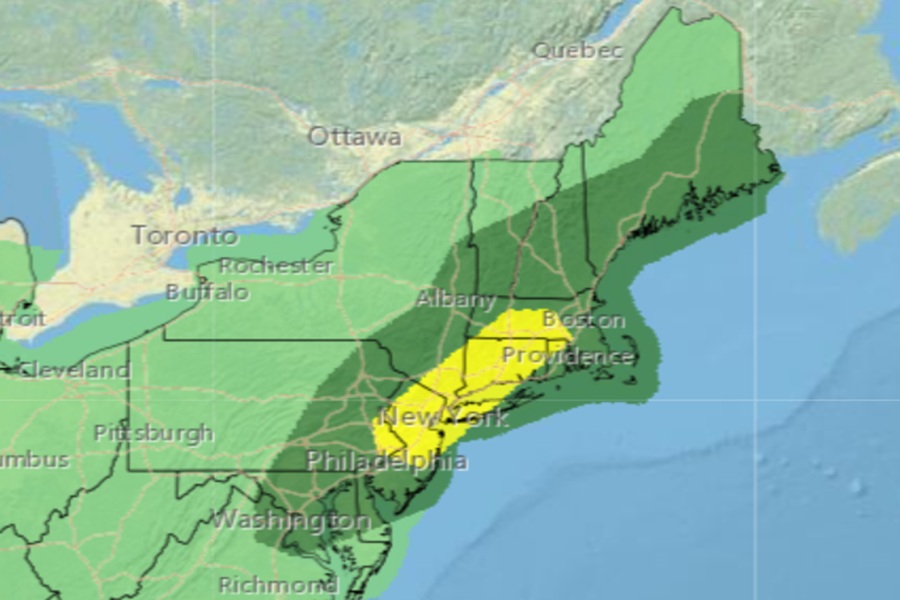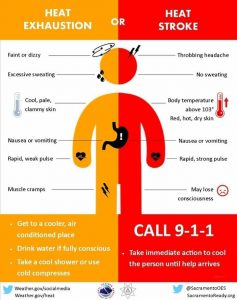
The National Weather Service’s Storm Prediction Center (SPC) is warning that the northeast is prime for a severe weather outbreak tomorrow, especially an area stretching across northern and central New Jersey, eastern Pennsylvania, the New York City metro area, most of Connecticut, and portions of Rhode Island and Massachusetts.
The greatest threat from these storms tomorrow will be in the form of severe, damaging wind gusts which could knock down trees, wires, or both, resulting in extensive power outages.
According to the SPC, a robust midlevel trough will advance eastward across Quebec and parts of New England through the day, while a related belt of strong midlevel westerly flow overspreads the Northeast and northern Mid-Atlantic. At the same time, a cold front will move southward across the region through the afternoon. As widely scattered thunderstorms along the front intercept a moist and destabilizing pre-convective air mass , conditions will promote organized clusters, small line segments, and possibly some supercell structures.
“The enhanced low/midlevel flow, steepening boundary-layer lapse rates, and expected clustering will support scattered wind damage across the region,” warns the SPC.

The severe weather threat zone overlaps with another hazard from extreme heat. An Extreme Heat Warning is in effect across a broad area which means that the combination of heat and humidity is expected to make it feel like it is 105 degrees or greater.
Take extra precautions if you work or spend time outside,” the National Weather Service cautions. “When possible, reschedule strenuous activities to early morning or evening. Know the signs and symptoms of heat exhaustion and heat stroke. Wear light weight and loose fitting clothing when possible, and drink plenty of water.”
The National Weather Service says that seniors and those with chronic health problems or mental health conditions are at an increased risk. Homes without air conditioning can be much hotter than outdoor temperatures.
“Use air conditioning to stay cool at home or go to a place that has air conditioning. If you don`t have home air conditioning, continue to seek out cool spaces each day as long as it remains hot, and for a few days after if your home is still hot. Check on vulnerable friends, family members and neighbors,” the National Weather Service advises.
To reduce risk during outdoor work, the Occupational Safety and Health Administration recommends scheduling frequent rest breaks in shaded or air conditioned environments. Authorities say that anyone overcome by heat should be moved to a cool and shaded location.